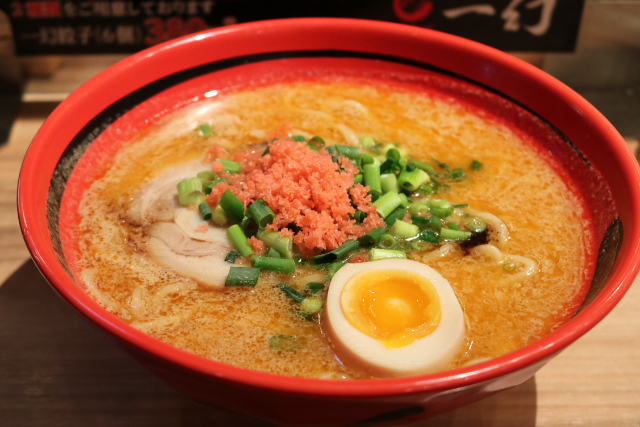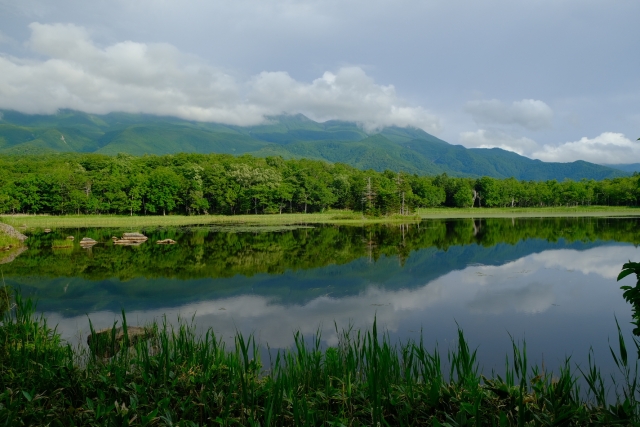Contents
Overview of Hokkaido
Hokkaido is Japan’s second-largest island that lies north of Honshu, Japan’s main island. Hokkaido is renowned for its extraordinary natural beauty, stunning landscapes, and rich cultural traditions. Hokkaido houses a population of approximately 5.3 million people who primarily speak Japanese.
Hokkaido boasts vast untouched wilderness, dramatic national parks, and picturesque mountains, including Daisetsuzan National Park, located in central Hokkaido, is home to Mount Asahidake. Shiretoko National Park is a UNESCO World Heritage Site located on the northeast coast of Hokkaido known for its abundant wildlife, rugged terrain, and outstanding scenery.

Hokkaido’s four distinct seasons offer a wide range of outdoor recreational activities, from skiing and snowboarding in winter to hiking and camping in summer. Hokkaido’s largest city, Sapporo, is the famous host of Japan’s annual winter festival, the Sapporo Snow Festival, attracting millions of international visitors. Other notable cities in Hokkaido include Hakodate, Asahikawa, and Obihiro, each renowned for their unique cultural offerings, such as local cuisine, annual festivals, and art exhibitions.
Hokkaido is well-known for its agricultural and seafood industry, often referred to as the land of milk and seafood. Hokkaido’s fertile soil and robust natural resources offer an abundance of fresh ingredients, making it a popular destination for food lovers. Iconic Hokkaido dishes include soup curry, ramen, and jingisukan (grilled lamb).

Hokkaido’s natural beauty, distinct cultures, and outdoor recreational activities make it a remarkable destination for travelers to experience Japan’s unique traditions and history.
History of Hokkaido
The history of Hokkaido is a story of resilience and adaptation to changing times, from ancient times until today. Here are some of the main events in Hokkaido’s history.
Ancient Times: The Ainu people, an indigenous group, were the first to live on Hokkaido, long before the arrival of the Japanese. The Ainu culture was characterized by their use of hunting, fishing, and gathering practices, and their unique religion and artistic styles. The Ainu lived harmoniously with the nature of Hokkaido for thousands of years, but with the arrival of Japanese colonizers in the later 19th century, much of their culture and way of life was lost.
The Japanese Colonial Era: In the 19th century, Hokkaido was sparsely populated and underdeveloped. The Japanese government saw the potential of the island’s resources, including timber and agriculture, and began to encourage settlement by Japanese people from other parts of Japan. This led to the rapid expansion of Hokkaido’s population, and the creation of new towns and cities. Large-scale industrialization in the latter half of the 20th century led to Hokkaido’s economic growth, although it was not without significant growing pains.
World War II: During World War II, Hokkaido was a crucial site for the Japanese mainland. Several of the island’s cities were hit by American bombing. Hokkaido’s economic and industrial development gave it a vital strategic importance as a production hub, and Japanese forces fiercely defended the island. As the war neared its end, the Battle of the Kurils (an archipelago of islands off the northern coast) took place in the area, with Soviet forces landing on some of the islands.
Post-War Rebuilding and Expansion: Following World War II, Hokkaido was rebuilt and modernized, and it became an important center for manufacturing, agriculture, and tourism. Expanding economic opportunities drew more people to the island, which led to a housing and real estate boom. The 1980s saw an explosion of development and tourism, as well as large-scale construction of ski resorts, hotels, and other tourist facilities. A recession in the 1990s and the growing importance of e-commerce eventually put a damper on Hokkaido’s economic expansion, but the island remains one of Japan’s most important centers of industry and tourism.
Top 10 best places to visit in Hokkaido
Sapporo
Sapporo is the capital city of Hokkaido and is famous for its annual winter festival, which features large ice sculptures. It is also home to numerous museums, parks, and traditional markets.

Here are 11 places you should travel in Sapporo
Furano
Furano is a famous ski resort in Hokkaido which is famous for its picturesque lavender fields, wineries, and cheese factories.

Here are some recommendations on Places you should travel in Furano
Otaru
Otaru is a charming port town in Hokkaido which is famous for its old street covered with cobblestones, retro street lamps, and glassworks.

Here are some recommendations on Places you should travel in Otaru
Noboribetsu

Noboribetsu is known for its hot springs or onsen that radiate a strong sulfuric smell. It is also home to Hokkaido’s largest volcanic caldera.
Here are some recommendations on Places you should travel in Noboribetsu
Lake Toya

Lake Toya is a picturesque lake situated between two volcanic hills. It is a popular vacation spot in Hokkaido, and visitors can enjoy camping, boating, hiking, and Onsen hot spring bathing.
Here are some recommendations on Places you should travel in Lake Toya
Shiretoko National Park

Shiretoko National Park is known for its rugged wilderness, dramatic coastlines, and diverse wildlife. It is also home to the distinctive Kamuiwakka waterfall and hot springs.
Here are some recommendations on Places you should travel in Shiretoko
Asahikawa
Asahikawa is Hokkaido’s second-largest city and a popular gateway to the Daisetsuzan Mountains. Visitors can enjoy museums, parks, and one of the largest zoos in Japan.

Here are some recommendations on Places you should travel in Asahikawa
Kushiro
Kushiro is the fourth-largest city on the island and is known for its natural beauty and cultural heritage. The Kushiro Marsh is the largest wetland in Japan and is home to a variety of plants and animals, including the endangered Japanese crane. The city also has a strong Ainu culture, and visitors can learn about the indigenous people through various museums and cultural experiences. Kushiro is also the gateway to the Akan National Park, which features beautiful lakes.

Here are some recommendations on Places you should travel in Kushiro
Niseko
Niseko is famous for its abundant snow, which is some of the lightest and driest in the world, making it ideal for skiing and snowboarding. The town is surrounded by beautiful mountains and offers a range of slopes suitable for everyone, from beginners to advanced skiers. Niseko is also known for its hot springs or onsens, which provide the perfect way to unwind after a day on the slopes.

Here are some recommendations on Places you should travel in Niseko
Obihiro
Obihiro is known for its agricultural industry, particularly for its production of high-quality potatoes, dairy products, and beef. Obihiro is a great base for exploring the Tokachi region, which features beautiful rural landscapes, hiking trails, and hot springs.

Here are some recommendations on Places you should travel in Obihiro
Top 5 best things to do in Hokkaido
Skiing and Snowboarding
Hokkaido is known for its excellent ski resorts, making it a popular destination for winter sports enthusiasts. From beginner to advanced slopes, the powder snow, and the stunning scenery, Hokkaido provides an exceptional skiing and snowboarding experience. Resorts like Niseko, Furano, and Rusutsu offer a wide variety of slopes and facilities for families, couples or groups.
Visiting the Sapporo Snow Festival
This world-famous winter festival features massive snow and ice sculptures that light up at night. The snow festival is held annually in Sapporo in the month of February, and attracts visitors from all over the world. The festival is a perfect opportunity to enjoy snow and ice sculptures, sample local Hokkaido cuisine like soup curry and king crabs, and learn about Hokkaido’s history and culture.
Exploring the Shiretoko Peninsula
located at the northeast of Hokkaido, Shiretoko Peninsula is a beautiful national park recognized as a UNESCO World Heritage site. Enjoy hiking, wildlife watching, and experiencing stunning views of the mountains, sea, and sky. The Peninsula is home to brown bears, deer, foxes, and other wildlife that roam throughout the natural untouched beauty of the landscapes.
Onsen (Hot Spring)
Hokkaido offers a wide variety of hot springs, known as Onsen. Experience the Japanese bathing culture for relaxation, rejuvenation, and ending your day with a fantastic soak. There are more than a thousand Onsens of varying degrees and minerals found across Hokkaido, offering different experiences for different visitors.
Tasting Hokkaido’s Culinary Delights

Hokkaido is named Japan’s foodie destination, due to its variety of fresh produce and farms, seafood, including some of the best sushi and Sashimi. There are also some curious and extraordinary food options such as the Japanese sea urchin, ikura, which is the Japanese word for salmon roe, buckwheat noodles (soba), and soup curry – a soup that combines curry flavors with local vegetables and meat. Visitors can also take part in drink tasting like a Hokkaido-a local beer named “Sapporo beer”, and other popular drinks like Sake, Shochu, and Umeshu which is a plum wine. Hokkaido is the perfect destination for visitors that seek culinary delights as part of their journey.
Conclusion
In conclusion, Hokkaido prefecture in Japan is a captivating destination that offers a diverse range of experiences for travelers. From its breathtaking natural landscapes to its rich cultural heritage and culinary delights, Hokkaido has something for everyone.
The prefecture’s stunning natural beauty is a major draw for visitors. From the snow-capped mountains of the Daisetsuzan National Park to the crystal-clear lakes of Shiretoko and the colorful flower fields of Furano, Hokkaido is a paradise for outdoor enthusiasts. The region also boasts unique wildlife, including the iconic red-crowned cranes and the adorable Ezo deer.
Hokkaido’s distinct four seasons offer different experiences throughout the year. Winter brings world-class skiing and snowboarding opportunities in resorts like Niseko, while spring welcomes the blooming of cherry blossoms and vibrant fields of lavender in Furano. Summer offers mild temperatures for hiking, cycling, and enjoying the beautiful coastlines, while autumn treats visitors to stunning foliage colors in places like Daisetsuzan and Shikotsu-Toya National Parks.
The cultural heritage of Hokkaido is deeply rooted in the indigenous Ainu people, and visitors can learn about their traditions, language, and art at places like the Ainu Museum and Shiraoi Ainu Village. The region also showcases its history through well-preserved historical sites like the Old Hokkaido Government Building and the Otaru Canal.
Hokkaido’s culinary scene is renowned for its fresh seafood, dairy products, and agricultural bounty. From indulging in succulent seafood at the bustling Nijo Market in Sapporo to savoring the famous soup curry or tasting the region’s rich dairy products like ice cream and cheese, food lovers will find a plethora of delicious options to satisfy their taste buds.
In summary, Hokkaido prefecture is a captivating destination that offers a unique blend of natural beauty, cultural heritage, and culinary delights. Whether you’re seeking adventure in the great outdoors, immersing yourself in the local culture, or indulging in delicious cuisine, Hokkaido has something to offer. So, plan your trip to Hokkaido and create unforgettable memories in this enchanting part of Japan.

